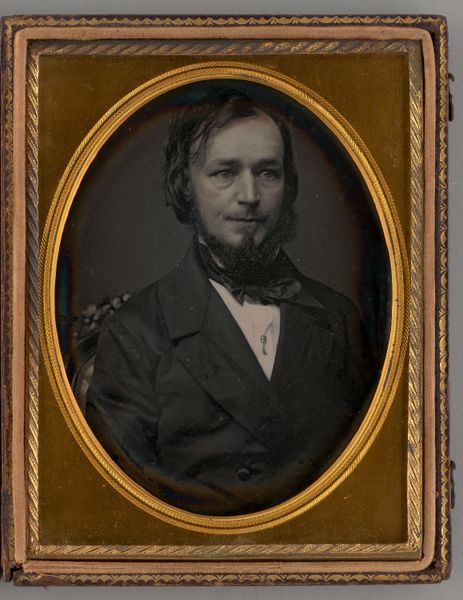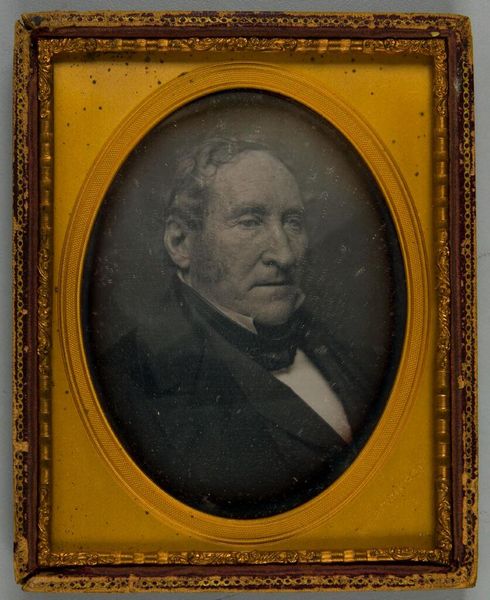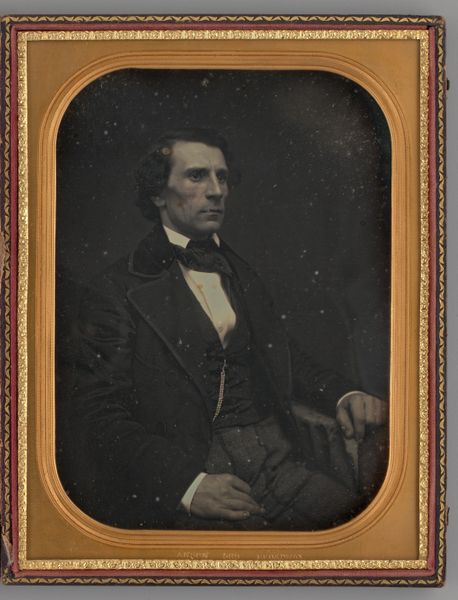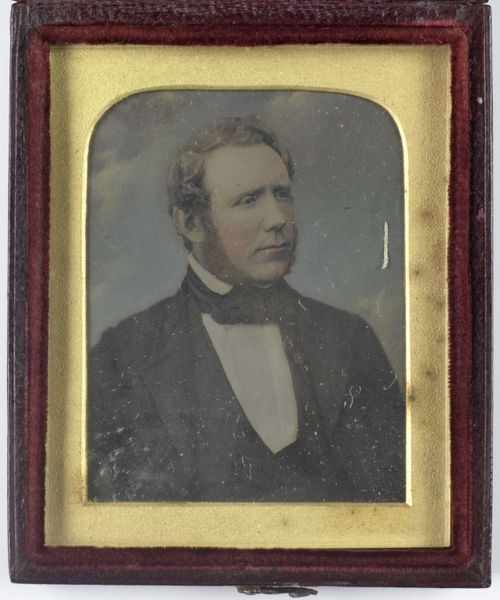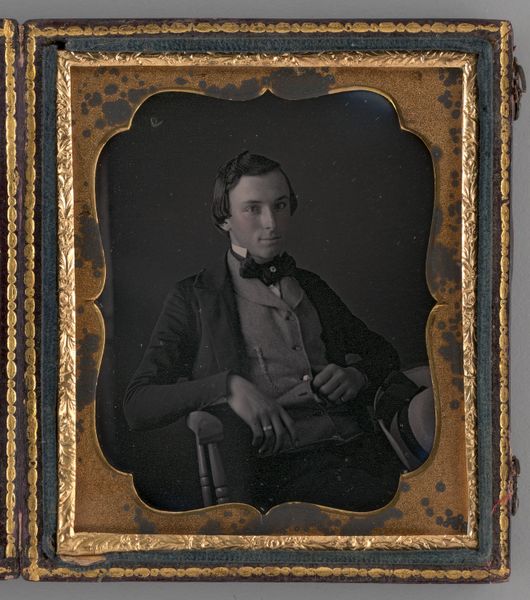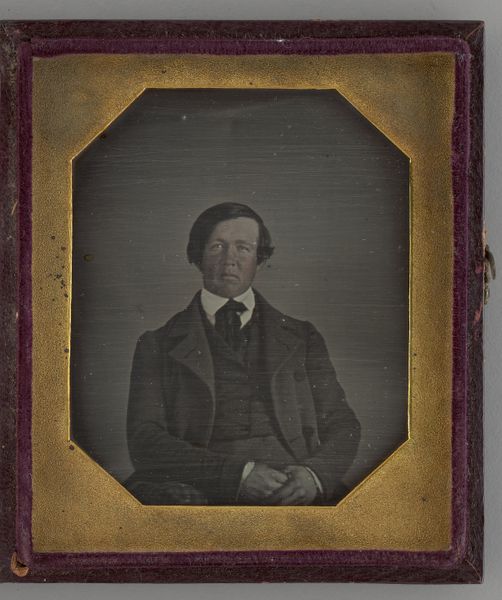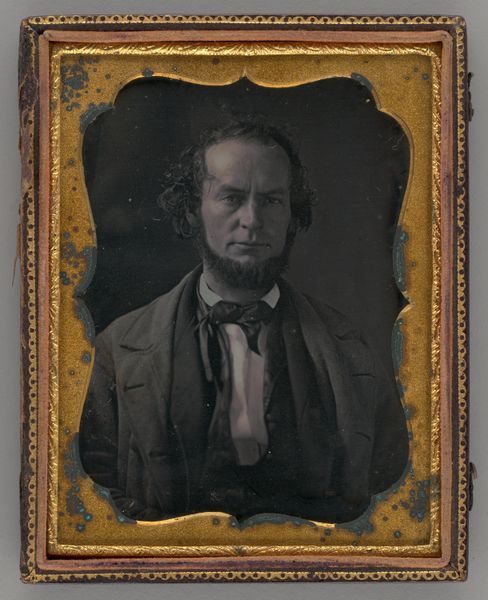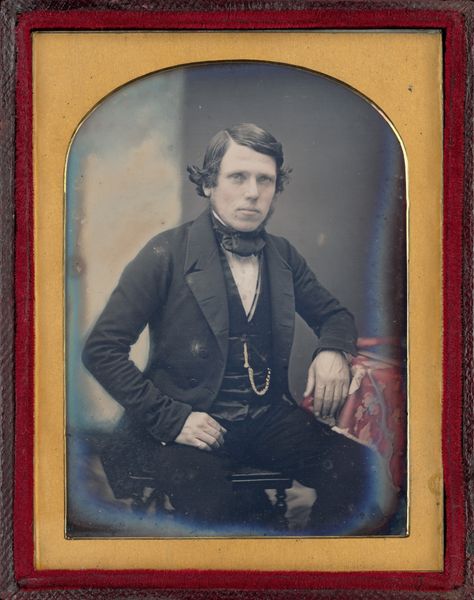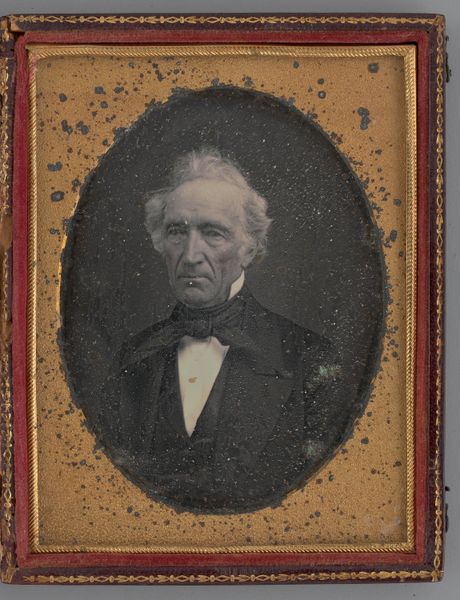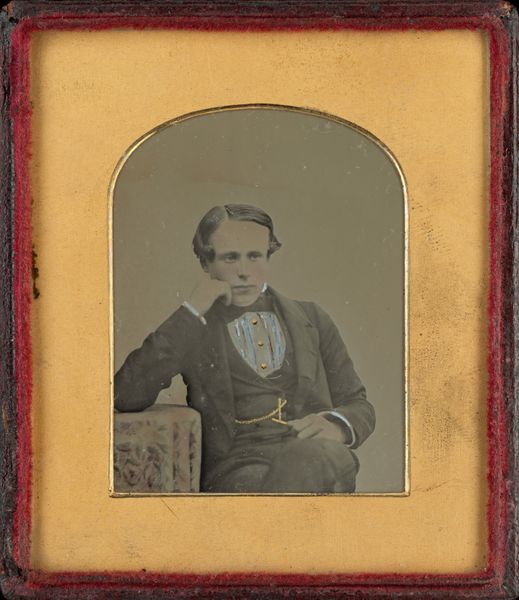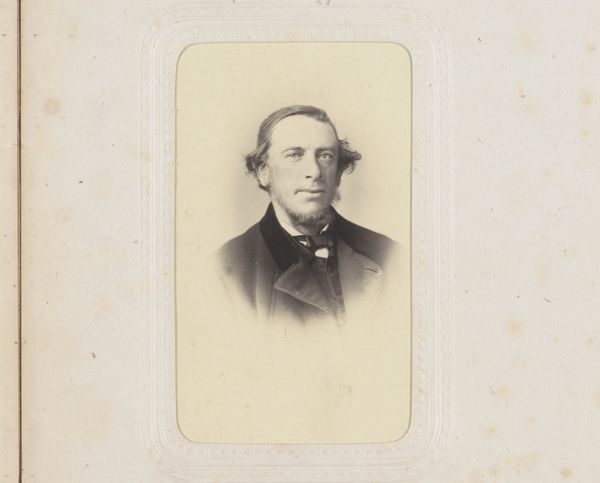
daguerreotype, photography
#
portrait
#
daguerreotype
#
photography
#
19th century
#
realism
Dimensions: height 63 mm, width 45 mm, height 92 mm, width 81 mm, thickness 12 mm
Copyright: Rijks Museum: Open Domain
Robert H. Vance made this portrait of an unknown man using the daguerrotype photographic process. Photography democratized portraiture in the 19th century as it provided people with the opportunity to produce their own images. This portrait in its gilded case is evidence of the increasing accessibility of art, but is it also a reminder of the ways in which new art forms were quickly absorbed into existing social hierarchies. This man's dark suit and bow tie suggest that he is of a certain social class, part of the emergent middle class that photography appealed to most readily. But, unlike painted portraits, the identity of the sitter here is unknown; was he part of Vance's social circle? Or someone who walked in off the street to the photographer's studio? As historians, it is vital to know that art and its institutions are always entangled with the wider social world. Historical records of the kind Vance might have kept could give us a much clearer picture of the sitter's social standing.
Comments
No comments
Be the first to comment and join the conversation on the ultimate creative platform.


